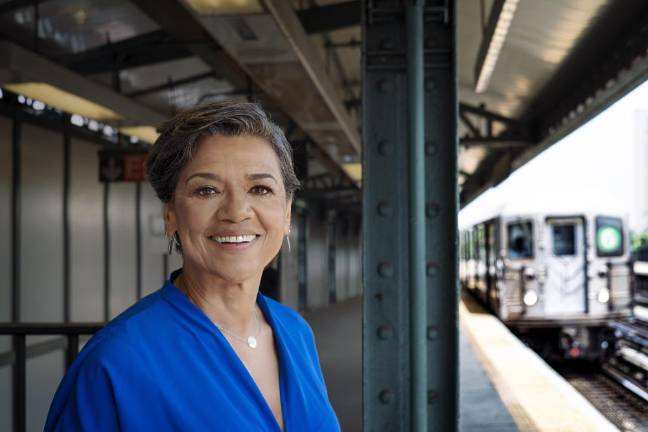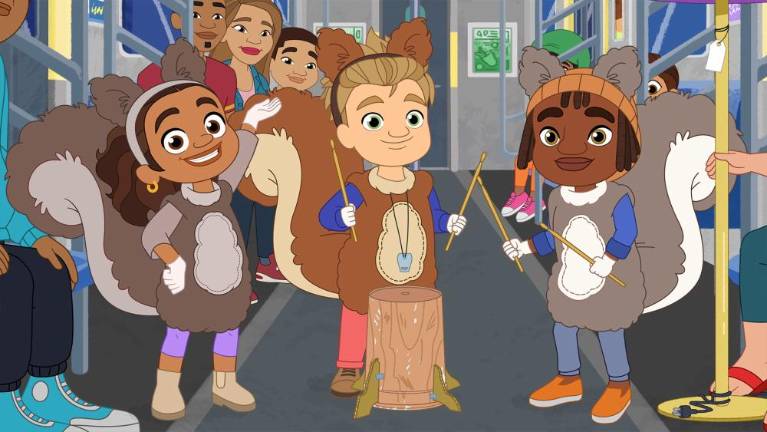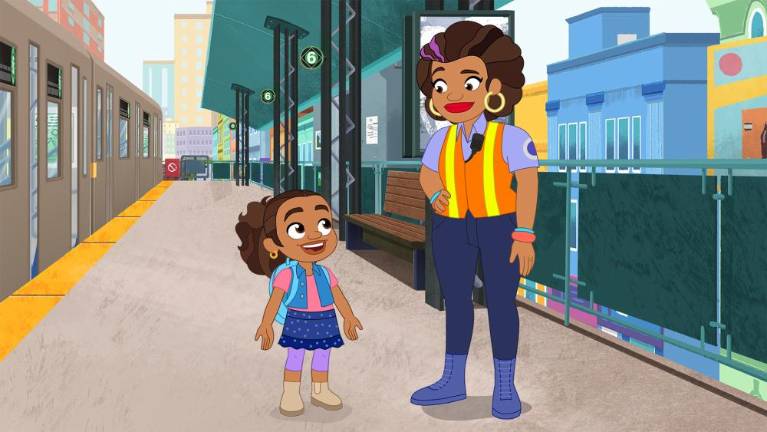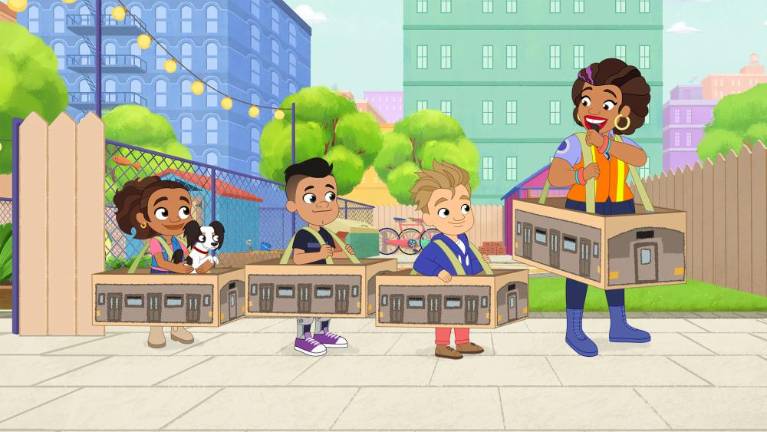From ‘Sesame Street’ to ‘Alma’s Way’
Actress Sonia Manzano, best known for playing Maria on “Sesame Street” for over four decades, on her children’s show inspired by her New York City roots




Growing up in the South Bronx, Sonia Manzano loved making believe she was the people she saw on television. However, as a first-generation Puerto Rican American, she was not represented on screen back then.
“All the television that I watched and loved, I never saw anybody who looked like me or lived in a situation that I lived in ... and not seeing people who looked like me on television took its toll,” she explained. “I wondered what I was going to contribute to a society that didn’t see me.”
That little girl would go on to become one of the first Latina actresses on television when she was cast as Maria on “Sesame Street,” a role she played from 1971 to 2015.
The now-Manhattan resident, who has 15 Emmys “all over the house,” is continuing to represent the Latino community on television with “Alma’s Way.” Manzano created and executive produces the animated PBS series, which premiered in 2021, using her own upbringing as inspiration. The show tells the story of its titular character, a six-year-old Puerto Rican girl from the Bronx, voiced by Bronx native Summer Rose Castillo, and features things like the 6 train, and the island’s traditional dish of mofongo and bomba and plena, its folk music.
“And I think it’s important to note that even though it’s a lot of Puerto Rican stuff, everybody likes it. I certainly learned that from “Sesame Street,” that even though it was set so much in an urban environment, and most kids’ shows are not, people in rural areas loved it. I think when you put it in a real place, people connect to it.”
How much of Alma’s story is based on your life?
Well, it’s inspired by my life, obviously. There are some very close storylines of celebrities visiting my house in the Bronx. Willie Colon, who’s a very famous sincero, we were the same age in my neighborhood. And for one birthday party, I think I was 14, he came to my house and played music with the group that my cousin was a part of, so that kind of worked its way into a storyline in “Alma’s Way.” So things that happened to me in the Bronx as a kid do inspire stories. When it was decided that we should really call it the Bronx, we of course had to have the number 6 train because it’s such an iconic train. It’s kind of a Puerto Rican icon to tell you the truth.
My three-year-old nephew is a huge fan of the show and the 6 train episode is one of his favorites. What feedback have you gotten from New York parents and children?
Oh, I think people love it. People love the mofongo episode. Mofongo is a Puerto Rican dish that Alma’s family is particularly fond of. They love the bomba plena episode. Bomba and plena is a traditional dance and music that strikes a personal chord with the viewers.
You said in an interview that “Sesame Street” was based in New York, but no one ever said it. And when you were creating “Alma’s Way,” someone said that you should actually say it’s set in the Bronx.
In my heart, it was always in the Bronx. “Sesame Street” might have been 110th Street with the brownstones. Ellen Doherty [chief creative officer] from Fred Rogers Productions said, “Why don’t we really just call it the Bronx?” And once you decide to be specific like that, it’s very freeing. Like the train, the train is very important to me. I have very personal feelings about the subway system and the train. When I was raised, the Third Avenue El went by my window and I loved to watch it as a little kid. My mother would come home from work, she came from Tremont Avenue, and I’d watch her get off the train and she’d wave from the platform to me in the window.
And my heart was broken when they took that train down. But then the number 6 train is ... what other train lines do they write songs about? There’s a very famous song called, “Il Numero 6” written by Bobby Rodriguez y La Compania. J. Lo has certainly mentioned it. What other great pop stars do you know associate a train station with their success somehow? And I took the number 6 train to my grandmother’s house on 110th and to the High School of Performing Arts. So there’s kind of a cool thing there happening and we have it in “Alma’s Way.”
How did you find and choose Summer Rose to voice Alma?
Summer Rose was just a terrific find. We looked hard. It wasn’t easy. We have a wonderful casting director, Elaine Del Valle, and she just kept looking for kids. And Summer Rose really stood out because she did a little rap song in her audition video. Her dad’s a rapper and she did a little song about her school. It was very cute. And it was like, “Of course, we need to have hip hop and rap if it’s gonna be about the Bronx.”
When did you know you wanted to be an actress?
I always loved television. I think it came from a love of storytelling and making believe I was people on television. I always loved that fantasy. I found a lot of refuge in making believe I was those people when I was a little kid. I was raised in a tumultuous environment and losing myself in stories was a way to relieve myself. And then frankly, when it came time to go to college, I didn’t have the grades to make it in college in the ‘60s, so I said I have to go to a college that accepts you on your acting abilities.
How did your role on “Sesame Street” come about?
In just the most banal way. I would say the most important things happen to you when you’re not paying that much attention. I was doing “Godspell.” “Sesame Street” wanted to diversify the cast. First, their audience was urban African American children, very specifically, those were the children they were aiming the show to. And it was the ‘60s and Latinos on the West Coast wanted Latinos on the show. And so I went to an audition and I got cast, very easily, one person saw me, Jon Stone. This was in the days when one person made the decision for television, not a committee.
How has children’s television changed since you started in it?
It was kind of the Wild West when I started “Sesame Street.” There were no other kids’ shows and PBS was just forming itself. The only other show, “Mister Rogers’ Neighborhood,” aired one year before “Sesame Street,” and there were educational shows, but they were just somebody standing in front of a camera giving information. They didn’t have artistic merit, they weren’t funny, they weren’t creative in any way and there were no kids, no writers really. There were original writers on “Sesame Street,” people who wrote plays and wrote advertising copy, because we were selling the alphabet.
What is your favorite “Sesame Street” episode?
Oh gosh, there are so many. The “Goodbye Mr. Hooper” episode was meaningful to me, when Will Lee, the actor who played Mr. Hooper, passed away. And Dulcy Singer [executive producer for “Sesame Street”] decided to not say he was on vacation or cast him with an actor, but to really talk about death.
On August 27, at Grand Central Terminal, you can meet Alma and play the new digital game “The Alma Train” and enjoy crafts, activities and live music from the Bronx.
https://www.eventbrite.com/e/almas-way-the-alma-train-party-tickets-393179710097